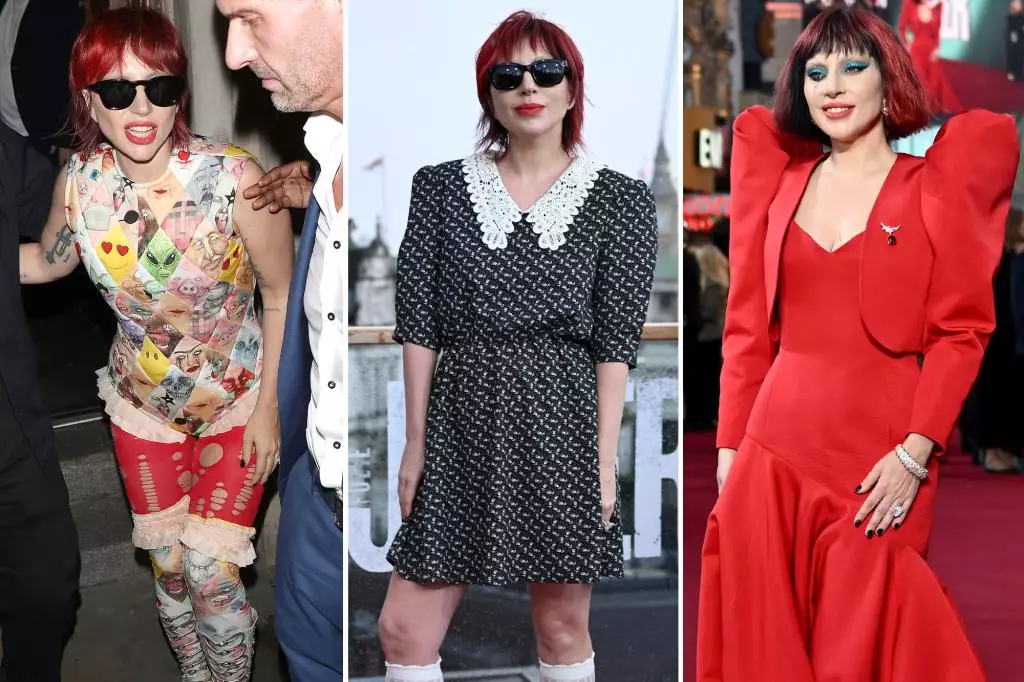Lady Gaga has consistently pushed the boundaries of performance art, effortlessly straddling the worlds of music and acting. With the release of “Joker: Folie à Deux” on October 4, the pop sensation is diving deep into the character of Harleen “Lee” Quinzel, the infamous Harley Quinn, love interest to Joaquin Phoenix’s portrayal of the Joker. This latest venture not only showcases her acting prowess but also illustrates her fearless approach to embodying a character, leading to an exciting transformation both on and off the screen.
In recent years, method acting has taken on various forms, particularly in how actors physically portray their roles. Gaga’s commitment to her character is evident through her striking visual aesthetic that parallels her musical style. Aligning with the trend set by other major figures in the industry—such as Margot Robbie, Blake Lively, and Zendaya—Gaga’s engagement in this performative transformation denotes a significant shift in her artistic strategy. Her commitment is not only about verbal expression; it extends to her appearance, style, and overall persona.
For this role, Gaga has adopted a vivid new look characterized by bold colors and theatrical designs. Her recent hair transformation into a fiery bob and her embrace of oversized harlequin motifs vividly reflect her new identity as Harley Quinn. Furthermore, her choice of makeup—specifically playful clown-like elements—complements her overall thematic direction, indicating a seamless blend of her musical identity and film persona.
Gaga’s press tour has undoubtedly been a feast for fashion enthusiasts. At the Venice Film Festival—the film’s premiere—Gaga showcased an awe-inspiring Dior Haute Couture gown that deftly combined elegance with drama. The outfit featured a black velvet bustier paired with a sweeping skirt, which not only accentuated her silhouette but also merged classical beauty with contemporary flair. The addition of Tiffany & Co. jewels and an elegant Philip Treacy headpiece elevated the ensemble further, making her a sight to behold on the red carpet.
The London premiere saw Gaga take it a step further. Swapping her iconic platinum blonde for an attention-grabbing scarlet bob, she donned a striking Celine gown paired with a puff-sleeved bolero jacket. Enhanced by a bold makeup palette—complete with blue eyeshadow and sparkling embellishments—Gaga’s look was inspirational, illustrating her ability to evolve artistically while embracing the darker elements of her character.
Yet, Gaga’s stylistic choices extend beyond formal appearances. During a listening party for her “Harlequin” concept album, she delighted fans with a playful, vintage striped babydoll dress complemented by harlequin-patterned tights. The everyday elegance showcased her versatility as an artist, blending high fashion with whimsical playfulness. Her ability to shift between experimental outfits while maintaining a cohesive theme speaks to her uniqueness and talent within the entertainment industry.
Even her choice of accessories, such as the majestic Jean Schlumberger by Tiffany “Bird on a Rock” brooch, further encapsulates Gaga’s ability to intertwine fashion with character embodiment. Each piece she wears contributes to the larger narrative of her persona as Harley Quinn, demonstrating her commitment to authenticity in her artistic expression.
As the promotional drive for “Joker: Folie à Deux” unfolds, it becomes clear that Gaga’s red hair may very well symbolize a new chapter in her artistic journey. This distinctive choice not only represents her commitment to the character but also highlights her ability to redefine beauty standards within the music and film industries. The ongoing evolution of her look ensures that audiences remain engaged, curious, and even inspire them to embrace change in their own lives.
Lady Gaga’s portrayal of Harley Quinn transcends mere performance; it is a testament to the dynamic blend of creativity, fashion, and a fierce commitment to character transformation that captivates her audience. With every public appearance, she continues to push boundaries, proving that art can, and should, be an ever-evolving expression of identity.

